Microsoft just unveiled the future of the laptop
At an event in Manhattan today, Microsoft’s CEO Satya Nadella and his team unveiled the company’s latest hardware devices. The event comes a year after Microsoft unveiled a slate of new devices, showing the longtime software company coming into its own with fresh, impressive hardware designs. And this year’s event was no different, with the company showing off solid updates to its Surface line of products, and a host of new devices. Some of its forthcoming devices, the company seems to hope, will change the way we interact with computers.
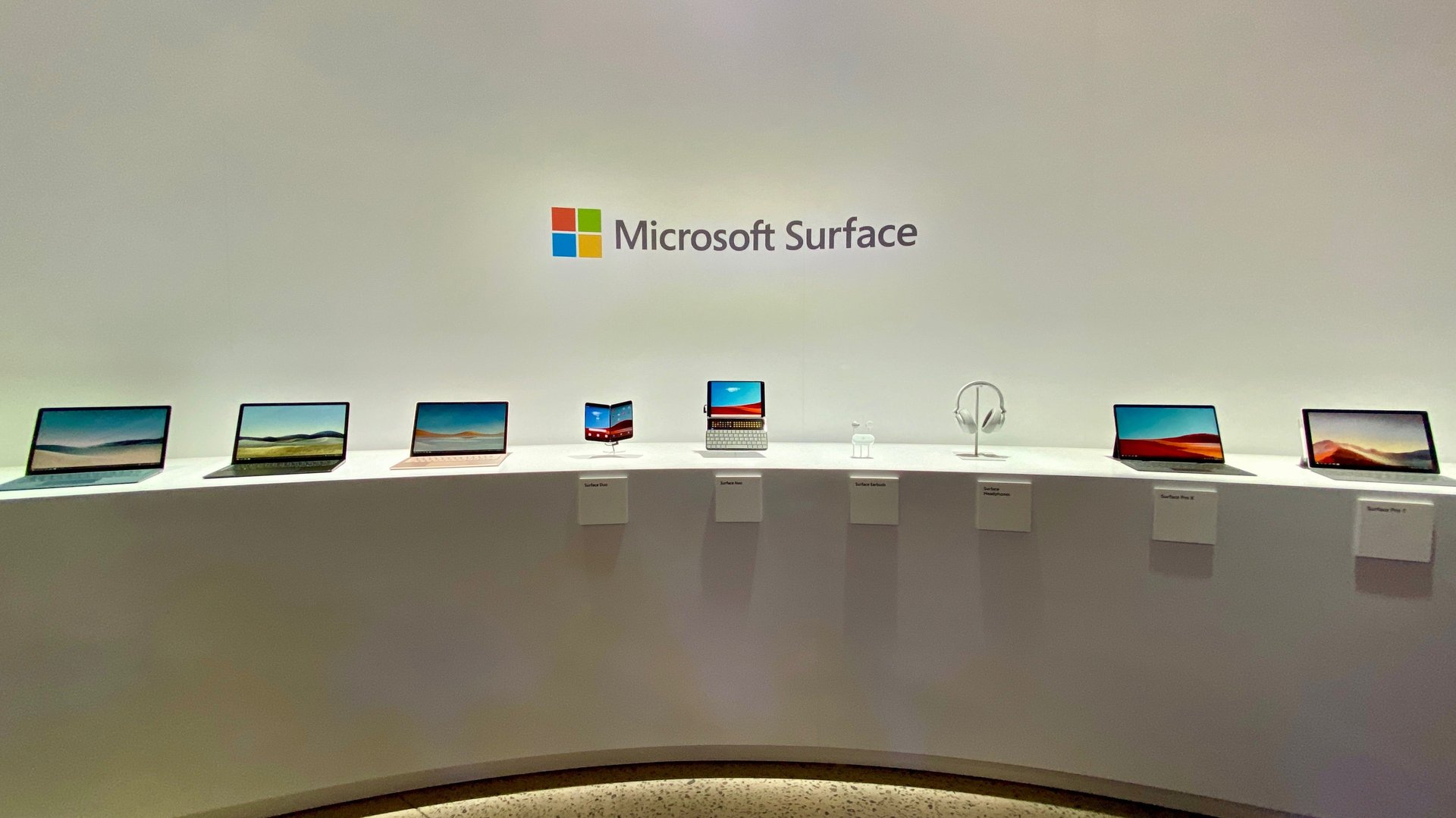

At an event in Manhattan today, Microsoft’s CEO Satya Nadella and his team unveiled the company’s latest hardware devices. The event comes a year after Microsoft unveiled a slate of new devices, showing the longtime software company coming into its own with fresh, impressive hardware designs. And this year’s event was no different, with the company showing off solid updates to its Surface line of products, and a host of new devices. Some of its forthcoming devices, the company seems to hope, will change the way we interact with computers.
Here’s everything Microsoft announced at its event:
Surface Laptop 3
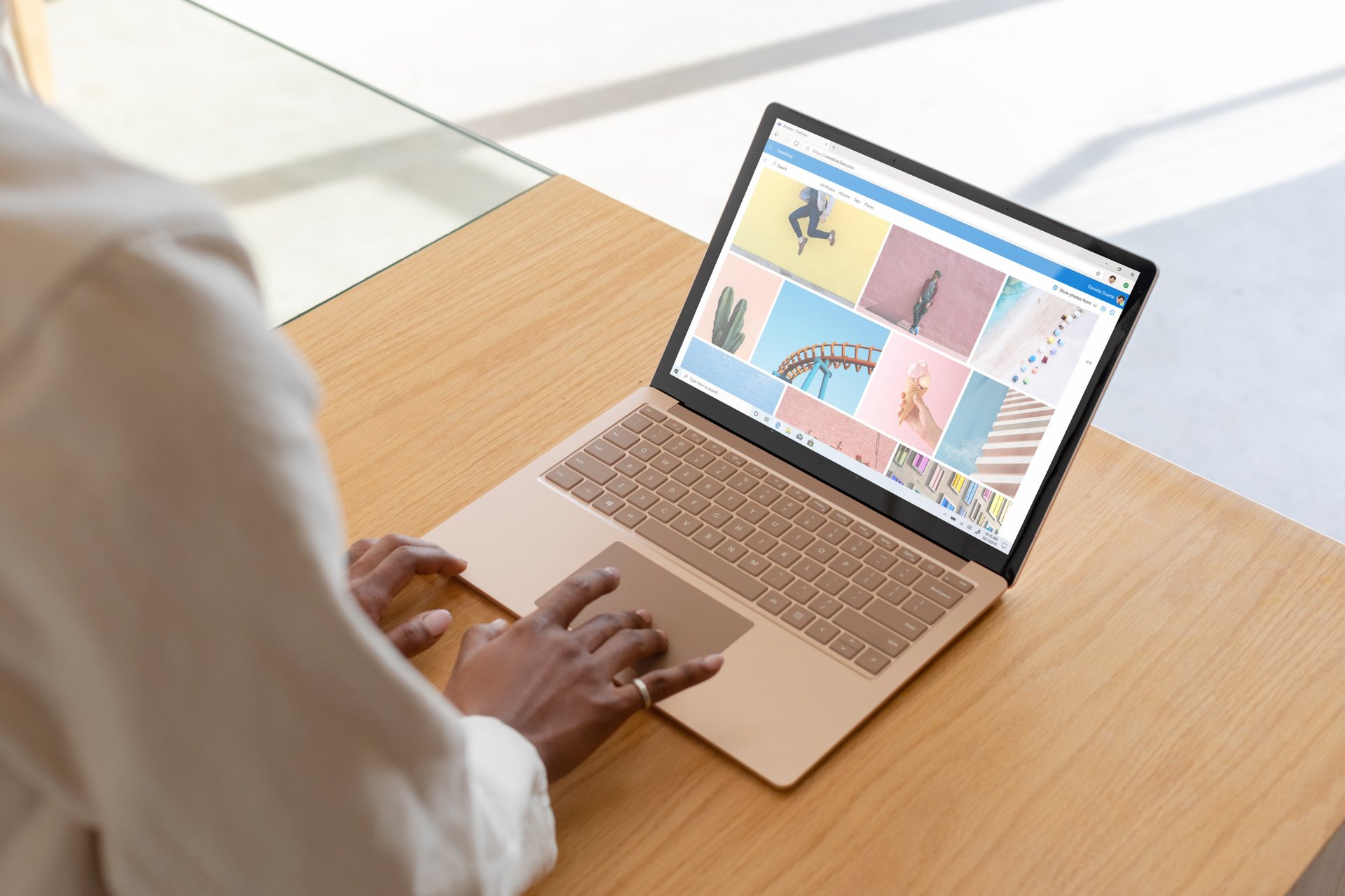
Microsoft’s head of devices Panos Panay kicked off the event by unveiling the company’s latest touchscreen laptop. The updated device now comes in two sizes (with 13- and 15-inch displays), and features a few key changes. It features a 20% larger trackpad, studio microphones (for better-sounding video calls), fast-charging batteries (up to 80% charge in under an hour), and powerful new Intel processor and AMD graphics cards that Panay said makes the device three times faster than a similar MacBook Air.
There were a few more veiled jabs at Apple’s laptops. Panay said there are a few things “you can never compromise on a computer,” and began discussing the laptop’s new keyboard design, something that’s plagued Apple laptops for the last half-decade. He also added that it’s tough to be productive “without a mouse,” something that Apple’s halfway-to-laptop iPad Pro devices don’t have. Then there were references to Surface Laptop’s new design, which doesn’t include a rubber bumper around the screen, nor does it have a “finger scoop” on the bottom of the device (to make it easier to open), as all MacBooks and many other laptops feature. Whether these are important design changes or just swipes at the competition remains to be seen.
The laptop can also be repaired a little more easily than many similar devices on the market today: You can unscrew the feet of the laptop to get to the motherboard, and you can easily replace the hard drive.
The laptops will start at $999 and $1,199 respectively. They’re available for preorder today, and will be in stores Oct. 22.
Surface Pro 7
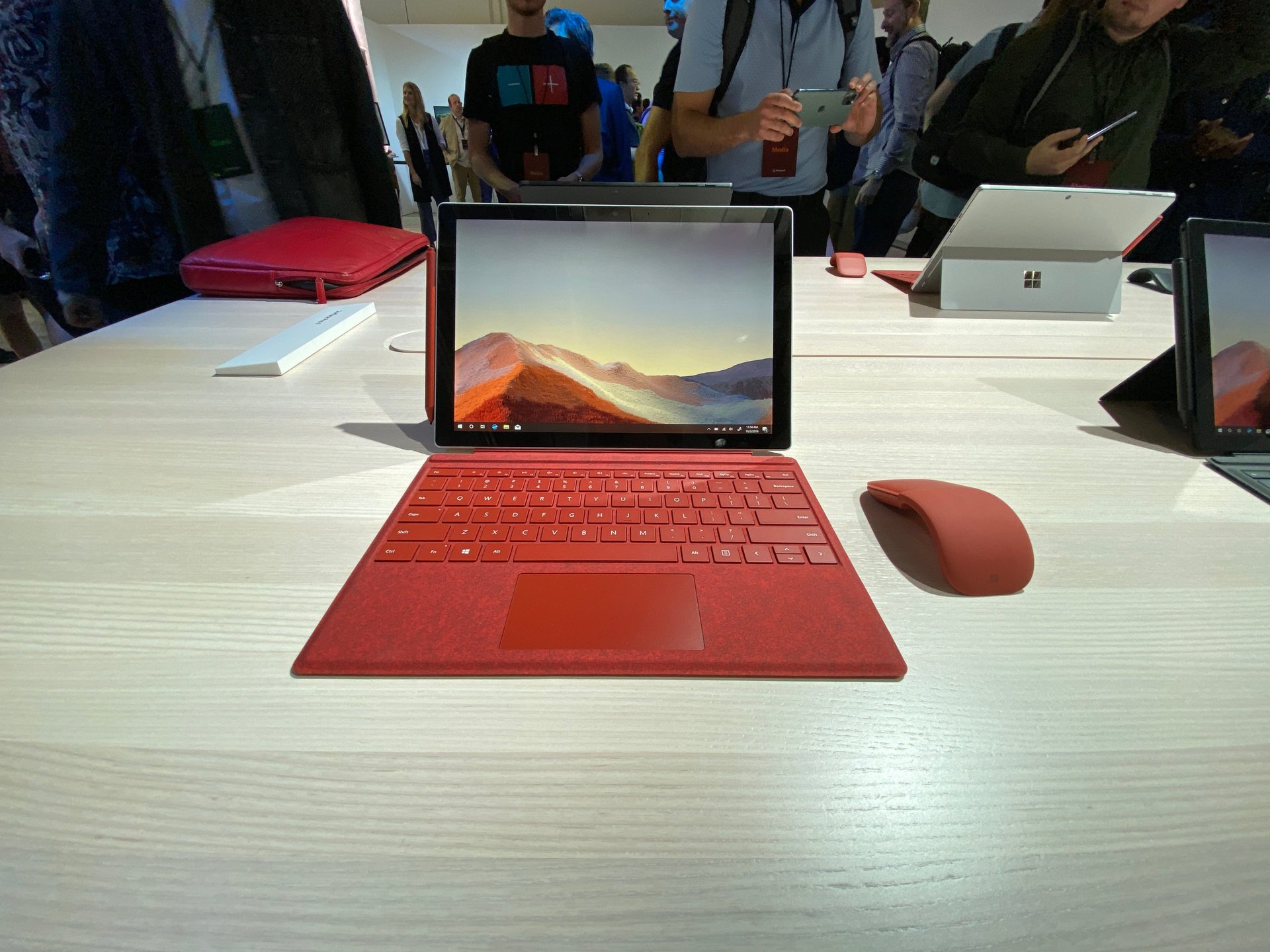
Microsoft showed off an updated version of its Pro tablet, which has a few additions over last year’s model. The device now features both regular USB-A and USB-C connections, and the same studio mics that are in the Surface Laptop 3. There have also been a few updates to the software that controls the stylus, so users can now interact with documents far more naturally. Using the pen, you can cross out a word in Word and it will disappear, or write information into a cell in Excel, and it’ll turn into a piece of data.
The updated tablet will start at $749, is available for preorder today, and will ship Oct. 22.
Surface Earbuds
Joining Apple, Samsung, Amazon, and just about every other company out there, Microsoft is jumping into the smart earbuds game. Its new, rather large buds will have deep integration to Microsoft’s Office 365 software. Using the buds, you can live-dictate a PowerPoint slide deck while tapping the buds to change slides, or dictate to Word to write a document. Various swiping and tapping gestures can open apps like Spotify and control them, without having to say a word to a voice assistant or look at a phone.
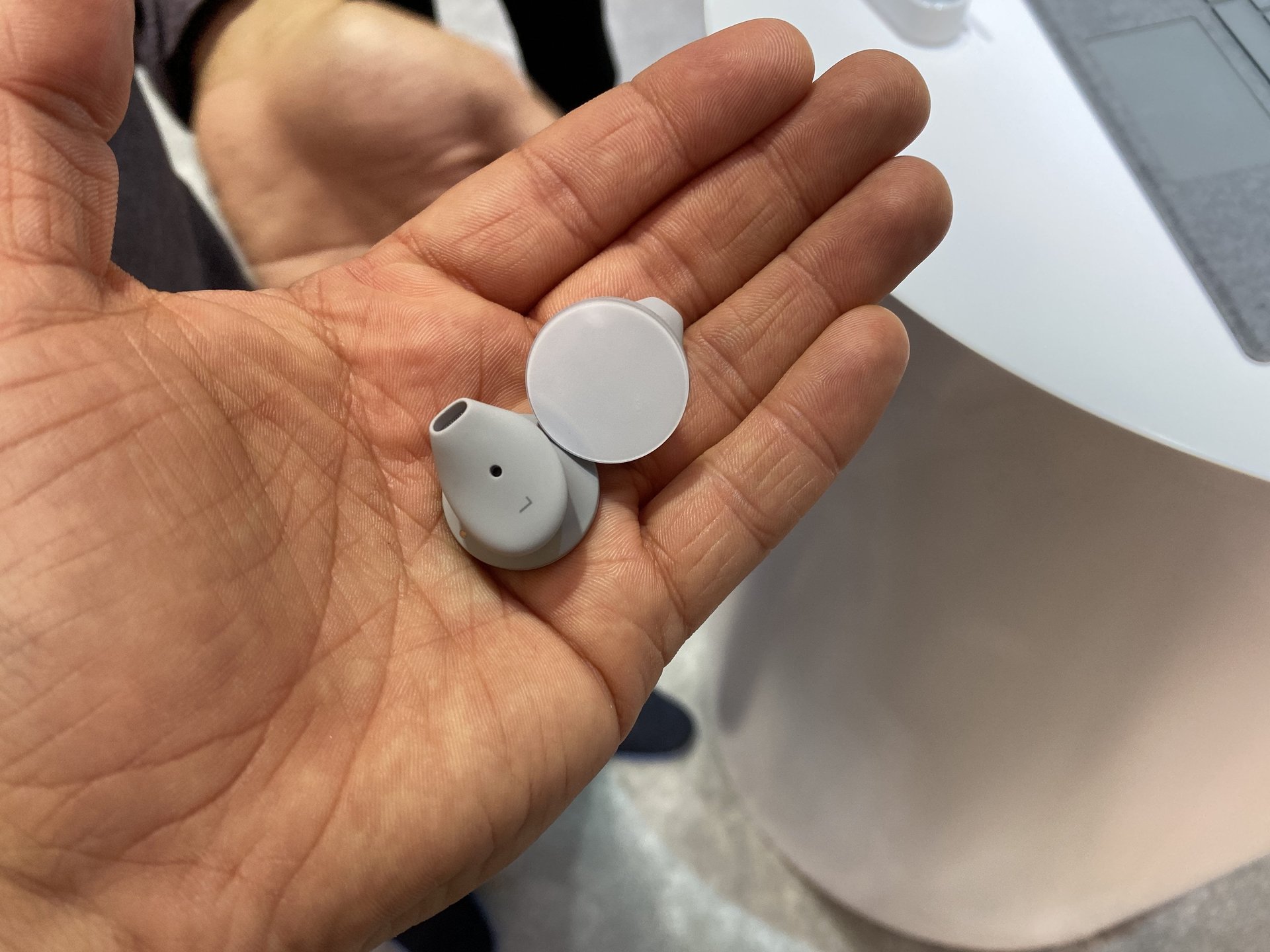
The earbuds have 8 hours of battery life per charge, and their case holds another two full charges, meaning that theoretically the buds can be used for 24 hours before needing a full recharge. Their earpieces were designed to fit snugly in the ear, but not dive into the ear canal, which can be uncomfortable. The design also allows the wearer to still hear the outside world (useful for when you’re on the subway or out on the street) if needed.
The buds will cost $249, and Microsoft says they’ll be available in time for the holiday season. That’s a fair bit more than competitors like Apple and Amazon’s earbuds (which both cost under $150), but a representative for Microsoft told Quartz that it expects the deep integration with Office 365 will make them a must-buy for office workers.
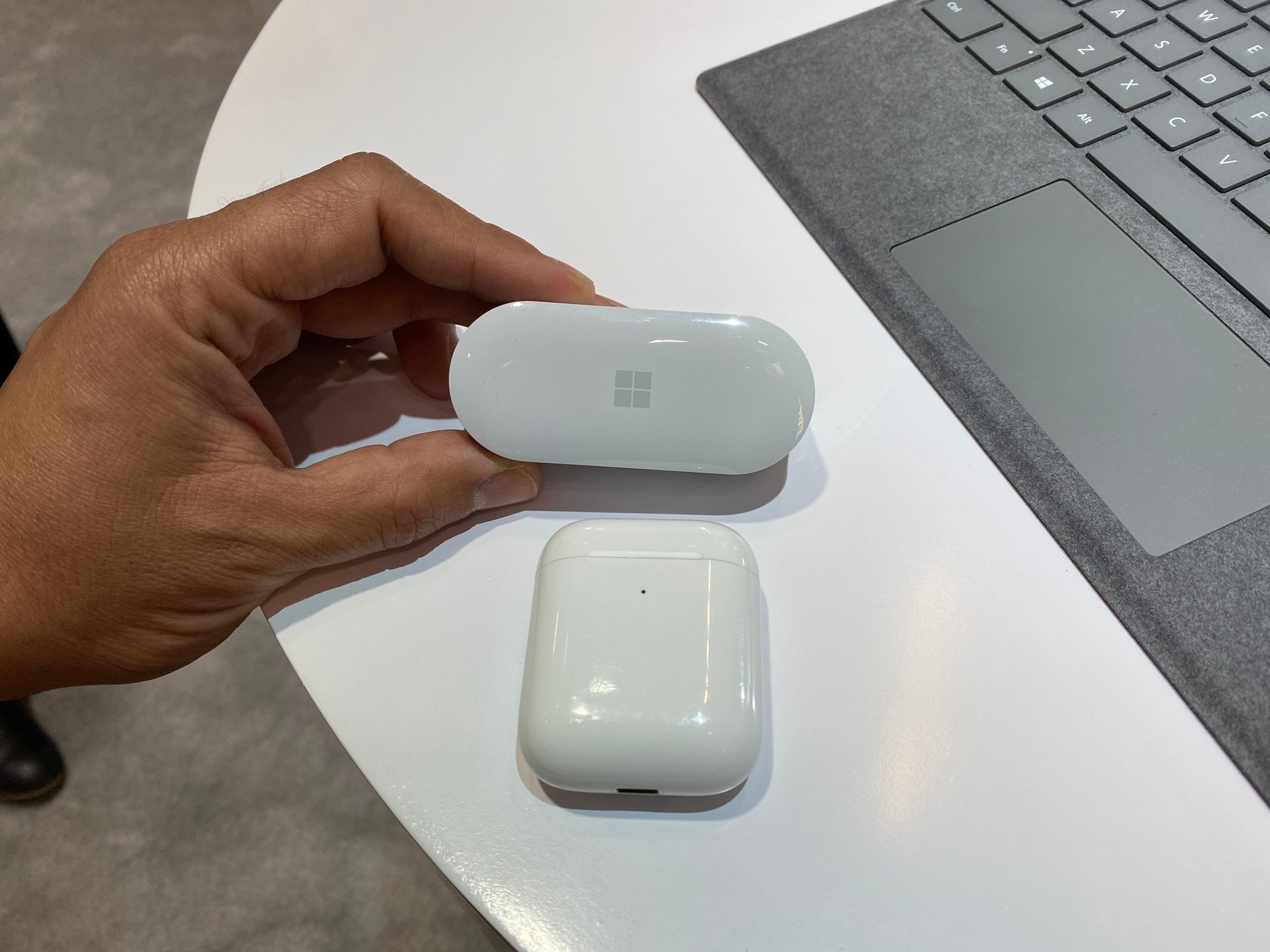
Surface Pro X
Rather like Apple did with the iPhone X, Microsoft has ruined its own numbering system by jumping right from the Surface Pro 7 to the new Surface Pro X. The device is a slimmed-down, more powerful tablet aimed at people who need to get real work done on the go. It has an always-on LTE cellular data connection, and Microsoft worked with Qualcomm to build a custom processor built on the company’s Snapdragon architecture.
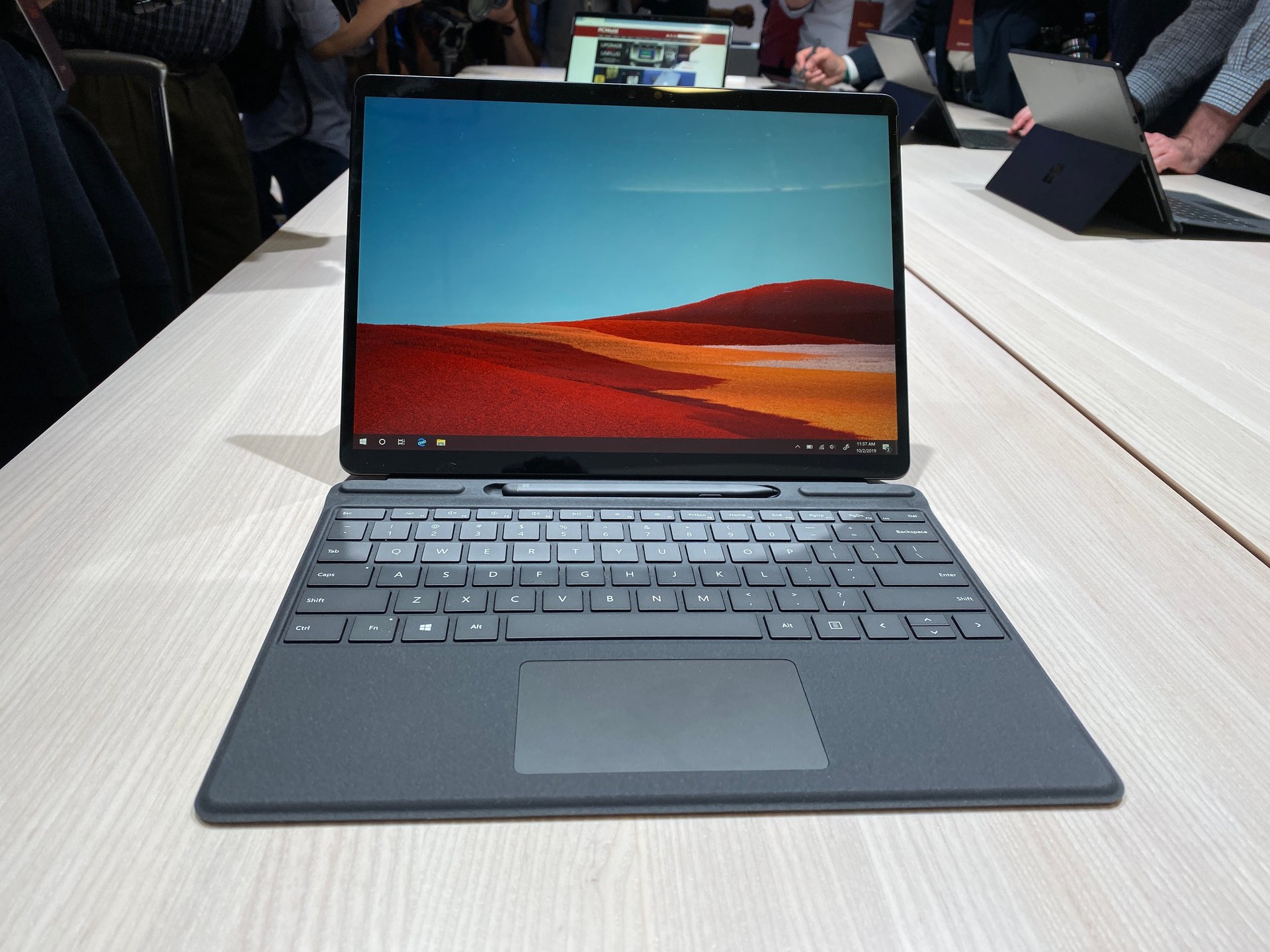
The tablet is only 5.33 mm thick and weighs 1.68 pounds. The optional keyboard case features a mouse (another jab at Apple), as well as a small magnetic well that a stylus can sit and charge in when it’s not in use.
The Surface Pro X will start at $999, is available for preorder today, and will be in stores Nov. 5.
Surface Neo
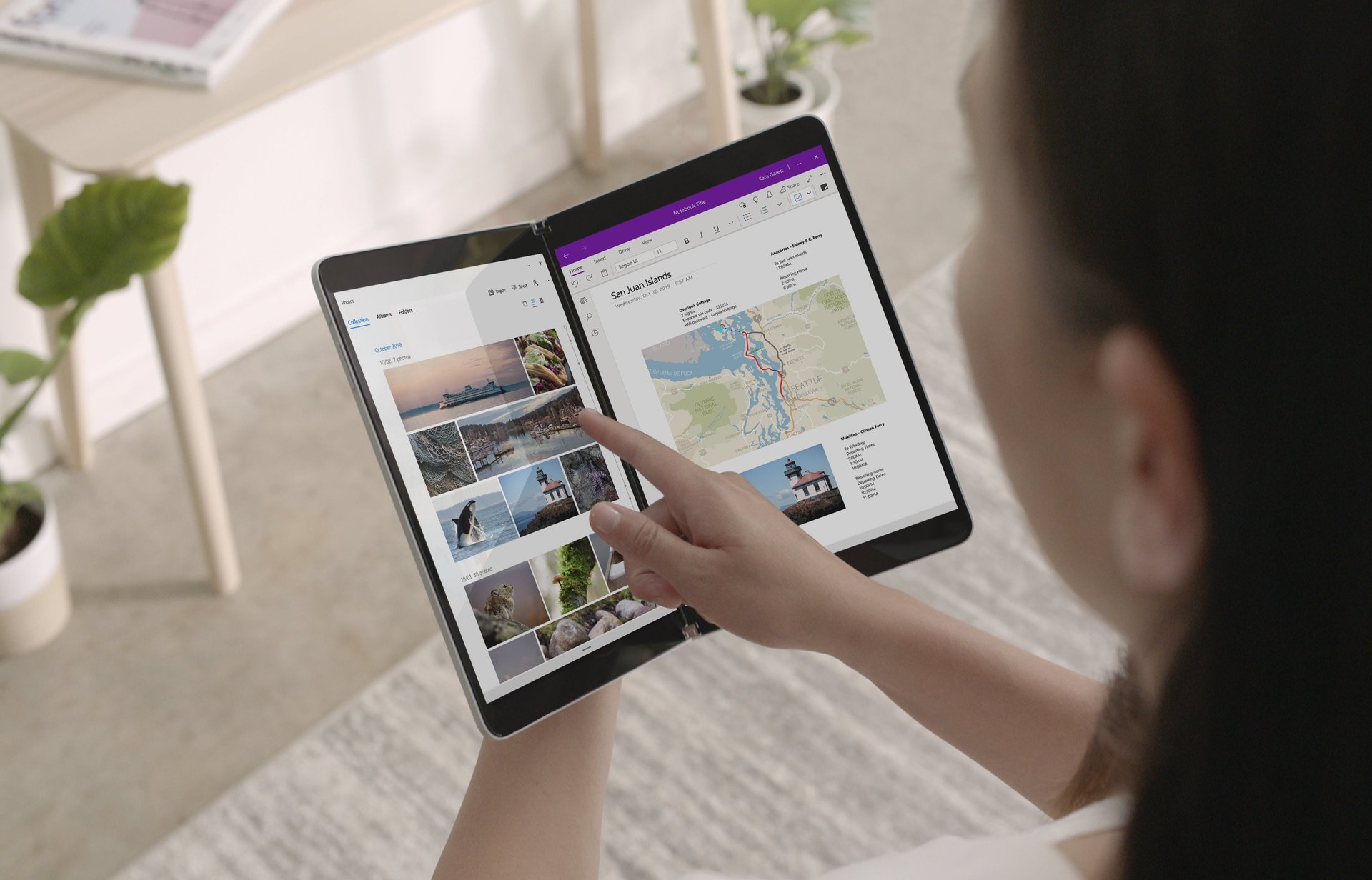
Panay also unveiled an entirely new type of device, which he said wouldn’t be ready until “next holiday”: the dual-screen Surface Neo. It’s a 5.6mm-thin touchscreen laptop where both sides of the device are displays, allowing it to be held like a book or a laptop. It has a 360-degree hinge that allows the two displays to be folded into any position. A stylus hangs off the back magnetically, charging when not in use.
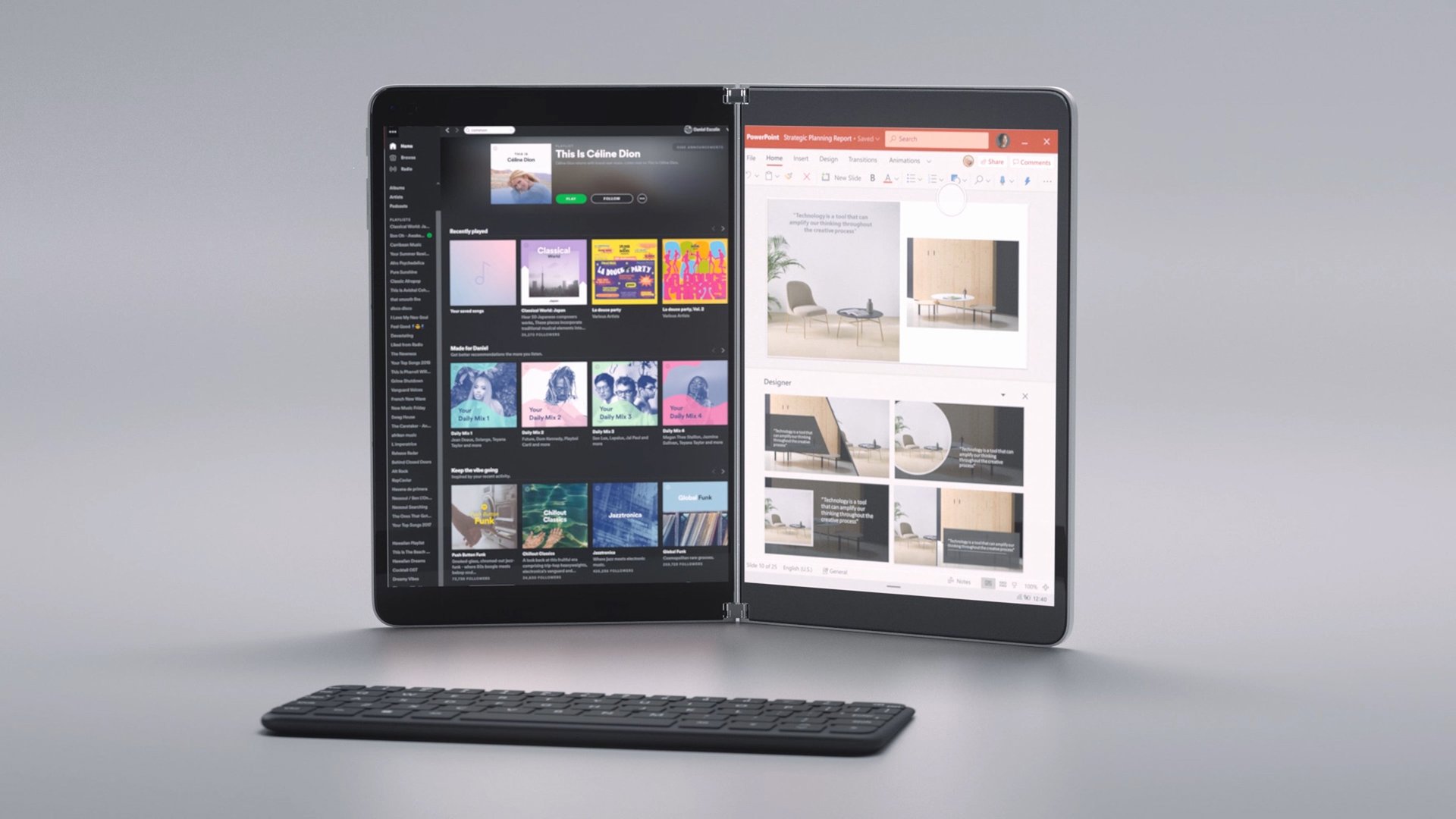
There’s also an optional magnetic keyboard cover that can flip up over one of the displays, allowing you to type with relative ease, if you’re not a fan of typing on glass. You can also pull off the keyboard, use both screens, and type from the keyboard remotely, connected over Bluetooth. Although the device isn’t finished (some of the interactions it showed off were still a little slow and clunky), Microsoft wants to get it into developers’ hands as soon as possible so that when it’s ready to ship to consumers–likely the holiday season of 2020, Panay said–it’ll be as complete as possible.
Surface Duo
Showing off one unfinished device apparently wasn’t enough. Panay also unveiled the Surface Duo, essentially a shrunken-down Neo that runs a combination of Google’s Android with Microsoft apps that can be used as a folding smartphone.
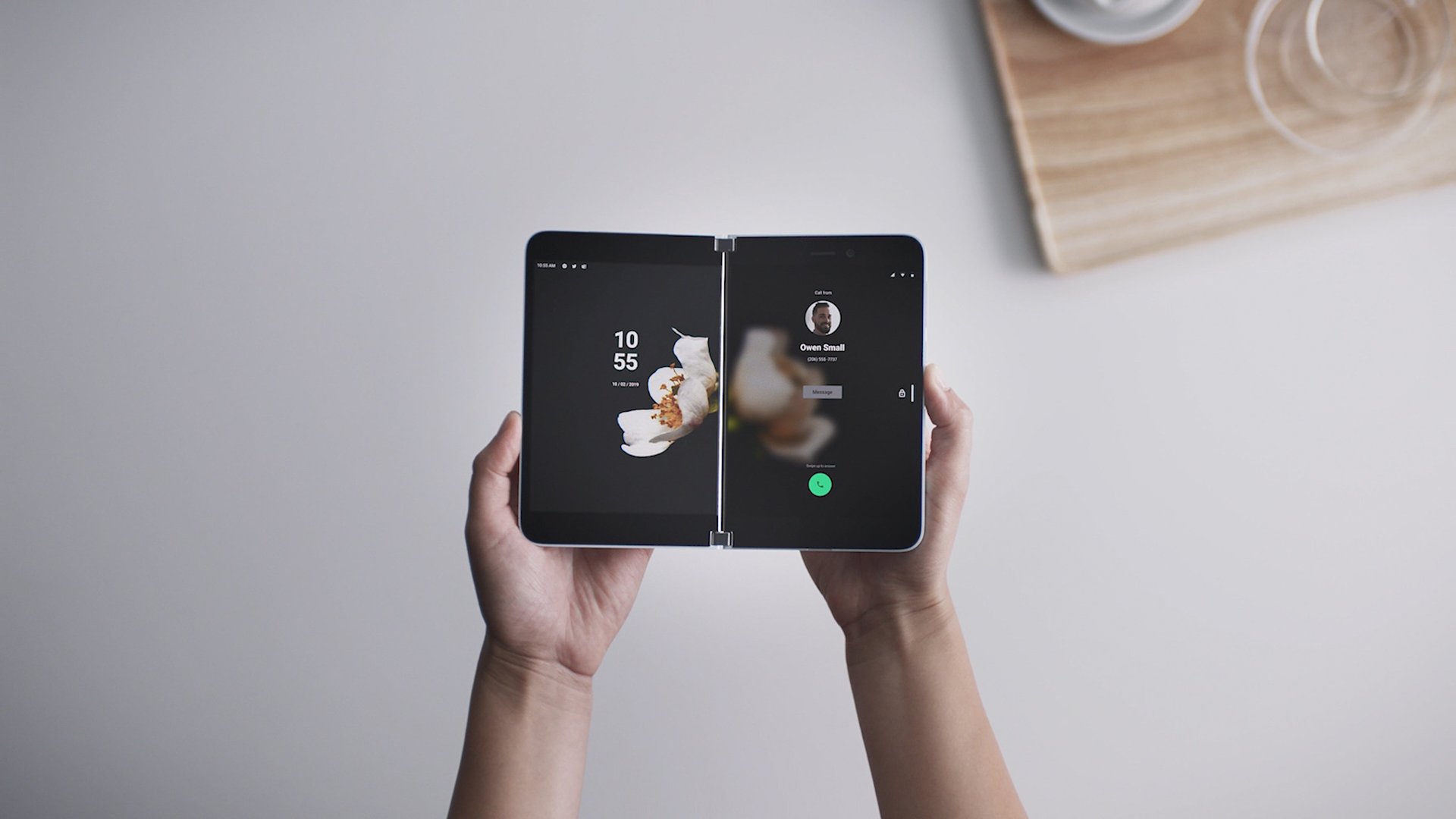
Unlike other tablets or large smartphones on the market, the device will let you multitask without compromise. Panay showed off someone taking a video call while running PowerPoint and answering emails. Many devices don’t have the power or screen real estate to allow you to run multiple processor-intensive applications at once.
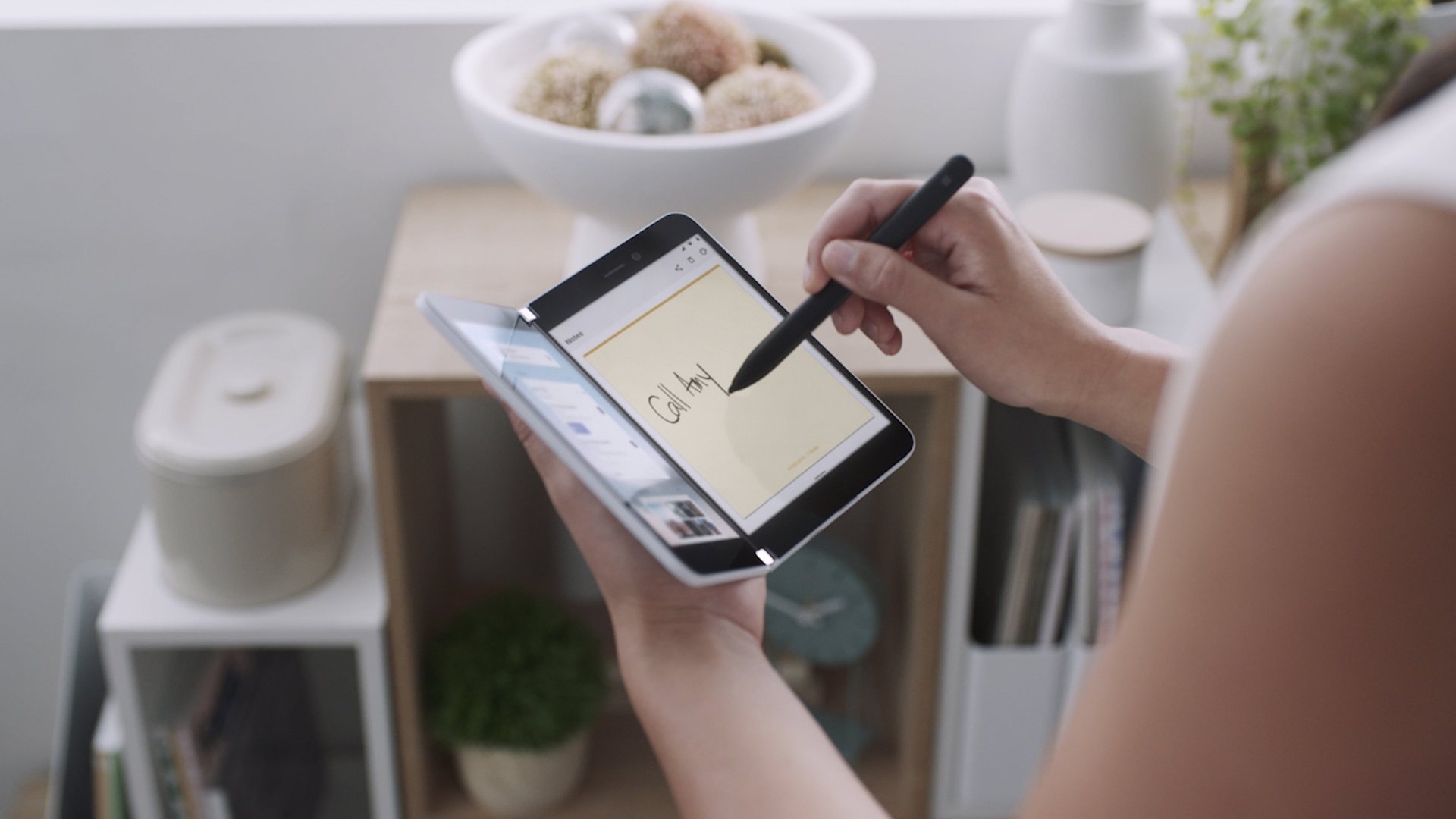
The device features two discrete screens that fold together, rather than one folding display, so hopefully the Duo won’t struggle with some of the production issues that other foldable devices like Samsung’s Galaxy Fold and the Huawei Mate X have faced.
Like Neo, the Duo won’t be available until next year’s holiday season.
Windows 10 X
The confusingly named version of Windows (is it “ten-ten,” or “ten times,” or is the X just there to sound cool?) is designed specifically for dual-screened devices. Microsoft isn’t the only company working on dual-screen computers (Lenovo also said it was planning to release something similar in 2020), and so it’s building out a version of Windows over the next year just for this form factor.
Windows 10 X will recognize what orientation you’re holding up your device, and size the windows you have open accordingly. If you plop a keyboard over one of the screens, like Microsoft’s magnetic one, it’ll pull your windows onto the top screen and leave a tiny bar for keyboard shortcuts and emojis at the top of the second screen, which Microsoft is calling the “wonderbar.”
The new software will likely roll out to consumers around the same time as the Neo and Duo.